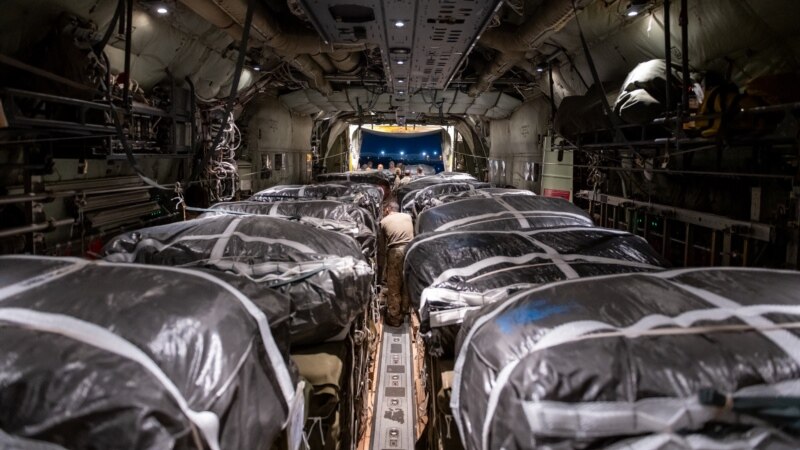The United States began airdropping emergency humanitarian aid to Gaza on Saturday. U.S. President Joe Biden, who announced the operation on Friday, said the United States was looking for other ways to help Palestinians in Hamas-ruled territories as Israel’s war with Hamas continues. Here’s what you need to know:
When does the airdrop start?
At 8:30 a.m. ET on Saturday, three C-130 cargo planes airdropped 66 packages of approximately 35,000 meals from Air Force Central Airport to Gaza. A U.S. official said the packages were dumped on a beach on Gaza’s southwestern Mediterranean coast.
The airdrop was coordinated with the Royal Jordanian Air Force, which has been dropping food and participated in Saturday’s mission.
More airdrops are expected.
Why now?
Biden’s decision came after at least 115 Palestinians were killed and more than 750 others injured on Thursday as they tried to get aid in northern Gaza under controversial circumstances, Gaza’s Hamas health ministry said. Witnesses said Israeli troops opened fire as large crowds scrambled to pull goods from the aid convoy, while Israel said it only fires when its troops feel threatened and that most civilian casualties were caused by stampedes. .
The United States has been urging Israel to speed up humanitarian aid to Gaza and open a third crossing into the region, but Thursday’s violence demonstrated the challenges regardless of the circumstances.
“The loss of life is heartbreaking,” Biden said in announcing his decision to order the airdrops. “People are so desperate.”
How will the United States ensure that aid reaches where it is needed?
Asked how the U.S. would prevent supplies from falling into the hands of Hamas, White House national security spokesman John Kirby told reporters the U.S. would learn as it goes through the air campaign.
“Few military operations are more complex than humanitarian aid airdrops,” he said. Kirby said Pentagon planners will determine airdrop locations, aiming to balance getting aid closest to where it is needed without leaving it on the ground. Personnel were harmed by the airdrop. .
“The biggest risk is making sure no one on the ground gets hurt,” Kirby said. He said the United States was also studying how to collect and distribute airdropped aid.
Will it make any difference?
The United States believes airdrops will help address the dire humanitarian situation in Gaza, but they cannot replace trucks, which can transport more aid more efficiently, although Thursday’s events also showed the risks of ground transportation.
Kirby said airdrops have an advantage over trucks because planes can get aid to specific locations very quickly. But in terms of volume, airdrops will “complement, not replace, ground transportation.”
What else can be done?
The United States and its allies are trying to forge a new temporary ceasefire agreement between Hamas and Israel that would release more hostages held by the Gaza militant group, free some Palestinian prisoners and up to six prisoners in Israeli jails. The fighting was suspended for a week.
If a ceasefire is achieved, the United States wants to allow large amounts of aid to continue flowing into Gaza. Biden said on Friday that the United States was working with allies to establish “maritime corridors” to deliver aid to the Palestinians from the sea.






